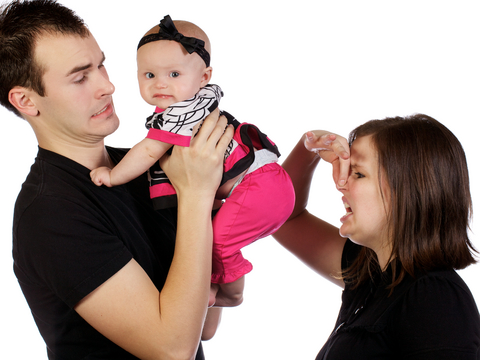
If you’ve ever burned your nose hairs off with your baby’s morning diaper, would it help to know that you’re smelling ammonia? A short introduction to pH as it relates to baby diapers might help you reduce the stink.
pH is measure of whether a solution is acidic or alkaline.
When some meany colleagues of mine beat me in a diaper quiz game, they laughed and laughed when I tried to guess what neutral pH was. I figured neutral should be zero, right? No, wrong. I tell you this so you understand that I’m not a scientist. Their first question after laughing was, “And, you homeschool?” Well, yes, but I don’t teach science. I have backup for that. I have a scientist husband, who happens to have lent his expertise to me today.
The quiz answer: neutral pH is 7. Below pH7, which is the level of water, a substance is acidic, and above pH7 is alkaline.
pH of common substances
Bleach 13
Baking Soda 9
Blood (and most bodily fluids) 7.4
Water at room temperature 7
Newborn skin 7
Urine 6
Human skin 5.5 (4.5-6)
Coffee 5
Orange Juice 3
Vinegar 2
Gastric Acid 1
Baby Diaper pH
A little background in science will help you keep your baby healthy and your diapers clean.
When it comes to diapers and pH, we should understand the pH levels of most bodily fluids (most are slightly alkaline at 7.4), urine (slightly acidic at about 6), and skin (a bit more acidic at about 5.5, though there is a range of normal). A newborn baby’s skin is closer to neutral than an older baby or an adult.
For our short science lesson, we are concerned with what happens when urine sits in a diaper either next to the skin before the diaper is changed or once the wet or dirty diaper sits in a pail waiting to be washed. It also helps to understand pH before we start adding vinegar (pH2) or baking soda (pH9) to our wash.
Internal: Urea Cycle
The urea cycle takes place in your renal system (kidneys & gall bladder). This cycle keeps urea, uric acid, and ammonia in balance in our bodies. Our bodies want nitrogen to be present as urea, which is neutral. Too much uric acid results in gout, and high ammonia levels are also poisonous to our bodies. Too far either direction, and we can’t survive.
We excrete ammonia predominantly in the form of urea. Once urine has left the body, in the absence of the kidneys’ work, urea in the urine begins to convert to ammonia. Time and enzymes move that process along.
The result: stinky on the outside.
In the Diaper on the Baby
In a baby’s diaper, urea breaks down and ammonia is released. The presence of fecal enzymes speeds this process, though a breastfed baby has higher pH stools and lower enzymatic activity. The more acidic a diaper environment, the more likely the outer layer of your baby’s skin will break down and your baby can get diaper rash.
To prevent diaper rash and exposure to the chemical soup that happens to bodily fluids outside the body, change your baby’s diaper whenever it is wet or soiled—yes, even in the middle of the night.
The result: stinky diaper, such as a nighttime diaper.
In the Diaper in the Pail
If diapers sit for any length of time, particularly if wet and dirty diapers are mixed, urea continues to break down and more ammonia is released.
The result: stinky pail.
In the Cloth Diaper Wash
A lot of cloth diapering parents use baking soda or vinegar to fix diaper smell, to strip diapers, or for other purposes in their wash. Most detergents are in the range close to neutral. You can raise pH, neutralizing uric acid for example, with baking soda (pH9) or lower pH, neutralizing ammonia, with vinegar (pH2).
The result: adjust pH for fresh, clean diapers.
The exact chemistry of how vinegar and baking soda work in the wash is beyond my little introduction, but this should lay the foundation for understanding laundry pH once we go there.
Image © Todd Castor | Dreamstime.com

Wow. THANKS! We’ve been having ammonia troubles since day 1. I’ve tried Rockin’ Green and all the other “home” remedies and nothing has really helped. The diapers are in the wash with baking soda and vinegar right now.
Susan, how did your experiments in diaper washing go? There is so much going on with diapers that pH is only a small part of the story. I need to do more research, but I’ll write more about it probably next month.